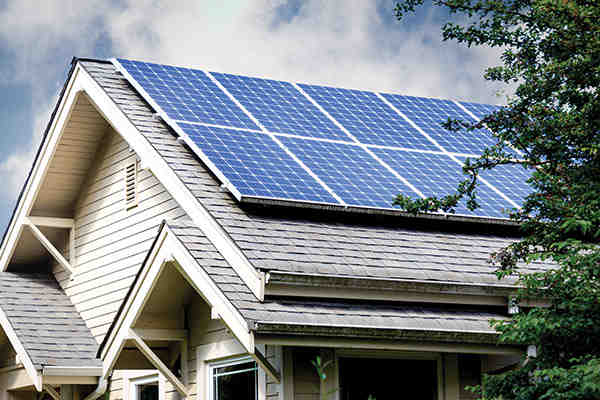Contents
What is residential photovoltaic?

In the United States, residential PV systems generally have 2–10 kWP DC and are installed on sloped roofs, while commercial systems can range from 10 kWP DC to many megawatts and are most often installed on flat or low-pitched roofs.
What are solar photovoltaic cells?
A photovoltaic (PV) cell, commonly called a solar cell, is a non-mechanical device that converts sunlight directly into electricity. Some photovoltaic cells can convert artificial light into electricity.
What is the most common type of PV system?
Grid connected system: This type of configuration is the most common type in applications where customers want to save energy on utility bills and where a utility grid exists for use when the PV panel is not generating any energy.
How do you make a photovoltaic system?
| 2.1 Total Wp of the needed PV array power | = 1419.6 / 3.4 |
|---|---|
| 2.2 Number of PV panels needed | = 413.9 / 110 |
| = 3.76 modules |
What are the 2 main disadvantages to solar energy?

However, solar energy still has significant drawbacks that we should be aware of. The two main disadvantages of solar energy are its dependence on weather conditions and the inability to store electricity. Solar energy production depends mainly on direct sunlight.
Why solar energy is bad?
Solar panels are harmful to the environment because toxic chemicals are used in their production. The production processes generate waste products that may be harmful to human health and ecology. Old solar panels can become toxic waste due to the heavy metal content of the solar cells and other pollutants.
Why solar is a ripoff?
Firms misled consumers about the true costs of installing solar panels, provided shoddy craftsmanship, and left homeowners higher utility costs while forcing them to sign unfair contracts that leave little scope for recourse. … Two companies in particular stand out: Vivint and SolarCity.
What happens to solar panels after 25 years?
A study by NREL shows that most panels still produce energy after 25 years, albeit with slightly reduced efficiency. Investing in solar energy is a long-term commitment. … After the 25-year warranty has expired, the panels should still be producing 75-87.5% of their nominal power.
What is the average cost of a residential solar system?
The cost of a solar electrical system is measured in dollars per watt. The average cost of a housing system is currently $ 3-5 per watt. This means the average 5kW housing system will cost anywhere from $ 15,000 to $ 25,000 before tax breaks or incentives.
How long does it take for solar panels to pay for themselves?
If you’re at home all day, it will take you less time to get your money back. Installation costs will pay off on average between 11 and 13 years, depending on where you live. For comparison, if you are only at home in the evenings, it is 22 to 27 years old. It’s all about how much electricity you use.
How can I get free solar panels from the government?
Simply put, you cannot get free solar panels from the government. These payment plans are actually solar power lease or power purchase contracts (PPAs) and are a free upfront option that gives you ownership of the PV company or installer.
Is it harder to sell a house with solar panels?
Selling a house with your own solar panels is easier than selling a house with rented panels. … According to Lawrence Berkeley National Laboratory, houses with standard 3.6 kW systems sell for about $ 15,000 more than houses with smaller systems or without panels.
How much do solar panels cost for a 2000 square foot house?

The cost of a solar panel for 2,000 sq m The average cost range for installing solar panels in a 2,000 square foot home is $ 15,000 to $ 40,000. Your costs depend on how much electricity you use each day.
What is the solar tax credit for 2021?
You may be eligible for the ITC for the tax year you installed the solar panels as long as the system produces electricity for your home in the United States. In 2021, ITC will provide a 26% tax relief for systems installed in 2020-2022 and 22% for systems installed in 2023.
Why is my electric bill so high when I have solar panels?
Solar energy systems are finite resources – they can only produce as much energy as is compatible with the size of the system, and most utilities limit the size of the system to the historical average energy consumption of the site.
Sources :


